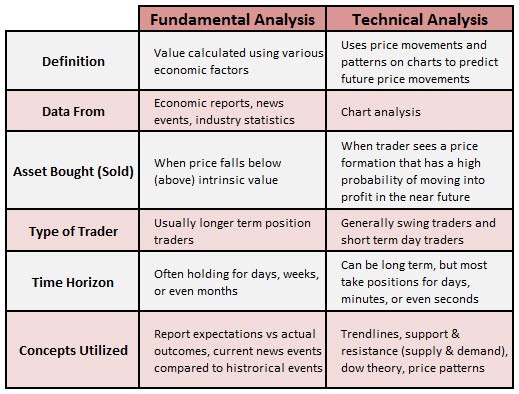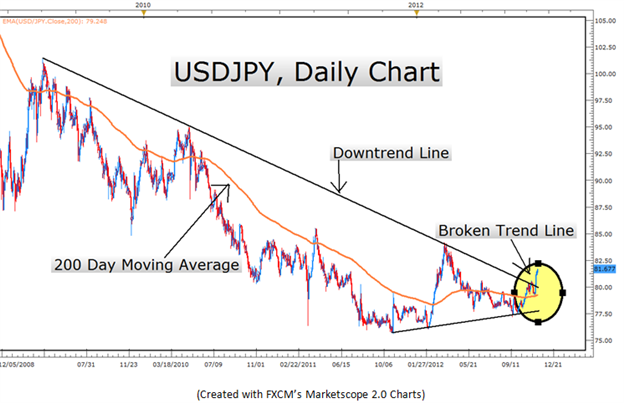Technical Versus Fundamental Analysis in Forex
Post on: 1 Июнь, 2015 No Comment

There is a great debate about which type of analysis is better for a trader. Is it better to be a fundamental trader or a technical trader? Over the next couple of minutes, we will explore what the difference is between these two types of traders and which pieces of information they tend to look at.
Fundamental Analysis
Fundamental analysis involves assessing the economic well being of an entity, not taking into account its price movements. For traders in the stock market, they would take a look at the companys earnings, expenses, assets, and liabilities. Fundamental traders will use those data points to determine the health of the company. If their economic well being is trending better as their companys earnings and balance sheet is growing, then fundamental traders may buy the firms stock in anticipation of demand growing for that firms stock.
We have similar data points in foreign exchange, except for the whole economy rather than a specific company. A fundamental forex trader will analyze the countrys inflation, trade balance, gross domestic product, growth in jobs and even their central banks benchmark interest rate. By assessing the relative trend of these data points, a trader is analyzing the relative health of the countrys economy and whether to trade the future movement of their currency.
Technical Analysis
Technical analysis involves pattern recognition on a price chart. For equity traders, they will analyze the price of volume of the shares traded on the exchange. If prices are moving higher on increasing volume, traders will see the demand for shares of that companys stock and buy.
Traders may also look for price patterns on the chart like triangles, flags, and double bottoms. Based on the pattern, a trader will determine the entry and exit points for the stock. A technical trader is not as concerned about why something is moving because the trends and patterns on the charts are their signals.
Forex has many of the same technical tools that are used in stock trading. A technical forex trader will assess the price action, trend, support and resistance levels. Many of the patterns used in equities trading are also traded in foreign exchange including those noted above.
Additionally, the indicators and oscillators added to a price chart are very similar between the stock and foreign exchange markets. Moving averages. Bollinger Bands. MACD. Relative Strength Index (RSI), and stochastic tends to be some of the more common tools in a technical traders tool box. This is a result of the indicators ease of use and clarity of signal it provides.
Technical analysis does not include black magic that many fundamentalists claim. Getting started in technical analysis can be done quickly by assessing the direction and strength of trends. After speaking to thousands of people in our webinars, seminars and twitter, my observation is that trend technical analysis is integrated into most facets of trading. Traders will use the trend analysis to help them determine which pair to trade and the direction to trade it.
(Created using FXCMs Marketscope 2.0 charts)

Above is an example of how a technical trader would notice this 6,000 pip trend where the AUD is very strong relative to a very weak EUR (which is why the rate is moving down). A trader would trade in the direction of this trend by selling the EUR/AUD pair (selling the EUR while simultaneously buying the AUD).
In conclusion, there are two common types of analysis (fundamental and technical). Most traders use a combination of both when making their trading decisions of which currency to trade, when to enter, and when to exit.
—Written by Jeremy Wagner, Lead Trading Instructor, DailyFX Education
To contact Jeremy, email jwagner@dailyfx.com. Follow me on Twitter at @JWagnerFXTrader.
To be added to Jeremys e-mail distribution list, send an email with the subject line Distribution List to jwagner@dailyfx.com.
DailyFX provides forex news and technical analysis on the trends that influence the global currency markets.
Learn forex trading with a free practice account and trading charts from FXCM.














